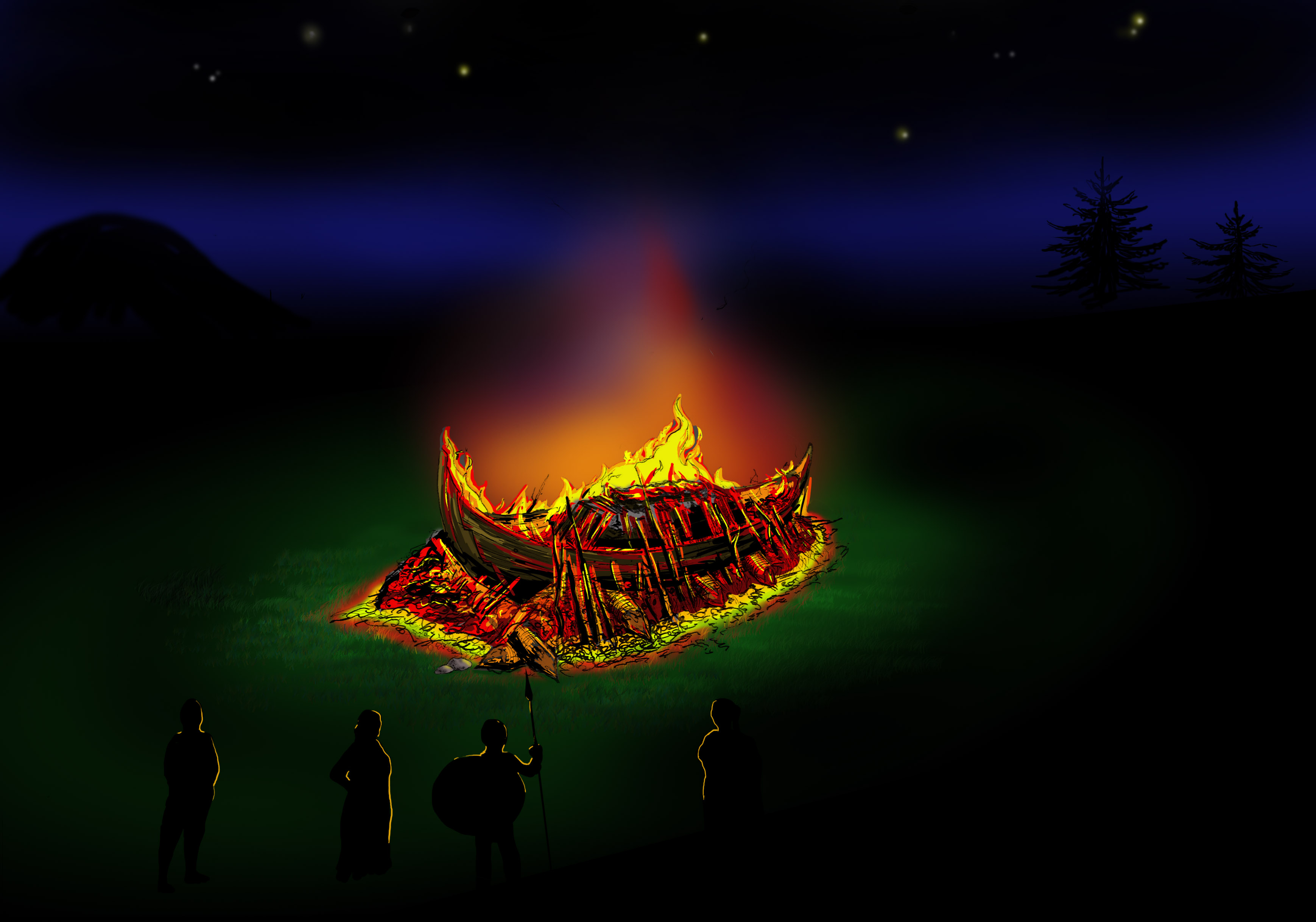
Two types of boat burial practices were common at the time, one using unburned boats and the other burned boats. Burial by fire was the most common burial practice in the Iron Age, regardless of whether a boat was involved. Those with boat remains were among the wealthiest individuals. The deceased was placed on a pyre, along with various objects. In some fire graves, a handful of objects mainly consisted of personal belongings, but traces of more richly appointed graves also remain containing a variety of burial gifts. But how do archaeologists know that the deceased took a boat along to their graves if everything was burned? Well, it’s all thanks to the iron rivets that held the boat together in one piece.
After the pyre was extinguished, what was left was usually collected and placed in an urn. The remains in the urn did not usually correspond to entire individuals. The urn was then transferred from the site of the pyre to a grave, although there were exceptions in which the urn was buried in the same place as the pyre. Some fire graves were under flat ground, or were marked by stone settings or burial mounds.

Caption: A box with rivets found in a fire grave in Hellvi, Gotland. Photo: Gotland Museum
From throughout the Baltic Sea
Graves of this type can be found in several locations throughout the Baltic Sea region. They demonstrate the importance of ships and boats to those who lived there throughout the ages.
On Åland, ship rivets are the most common find in Iron Age graves, but in many cases only a few rivets remain. It seems that parts of ships were burned, or that some rivets were added to represent ships. But on Åland’s largest burial ground, in Kvarnbo, a grave can be found containing 1,200 rivets. Such a case indicates that an entire ship must have been on the pyre. The rivets were found in a richly furnished grave that also contained weapons.
So, what about the burning ships we see in the movies? There is no archaeological evidence to support the idea that people from the Viking Age let flaming ships sail towards the horizon. Burying someone like that might not have the desired effect either. Sooner or later, the fire will go out on the water and the remains would then risk floating ashore again...
But there is a story from mythology that can be tied to burial customs. When the god Balder died, he was to be buried on his ship Hringhorni. It was supposed to be pushed out into the water, but the ship was so big that not even Thor could push it out. The Aesir had to ask the giantess Hyrrokin for help. She came riding on a wolf, with a snake for a bridle. She fired with such force that sparks flew and the ship caught fire.
In our next article, we take a closer look at the unburned burial boats in the Baltic Sea region. If you missed the first instalment, you can read it here.
Frog, Ahola, J & Lucenius, J (eds.), 2014. The Viking Age in Åland: Insights into Identity and Remnants of Culture. Annales Academiae Scientiarum Fennicae Humanities , vol. 372, Academia Scientiarum Fennica.